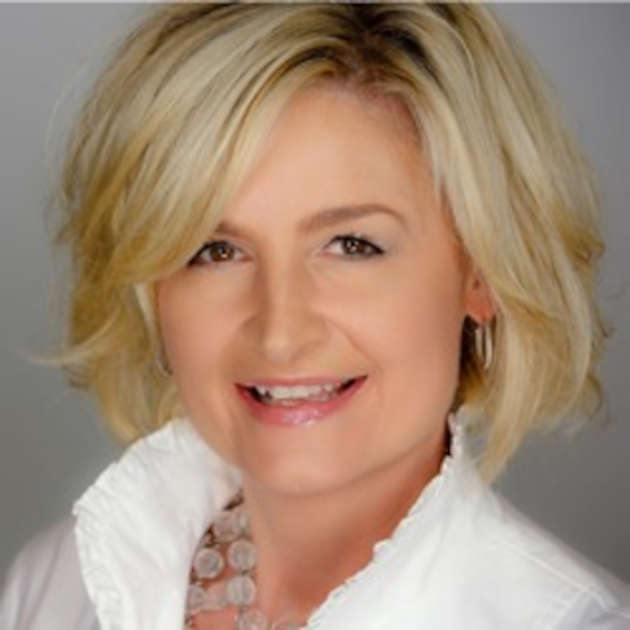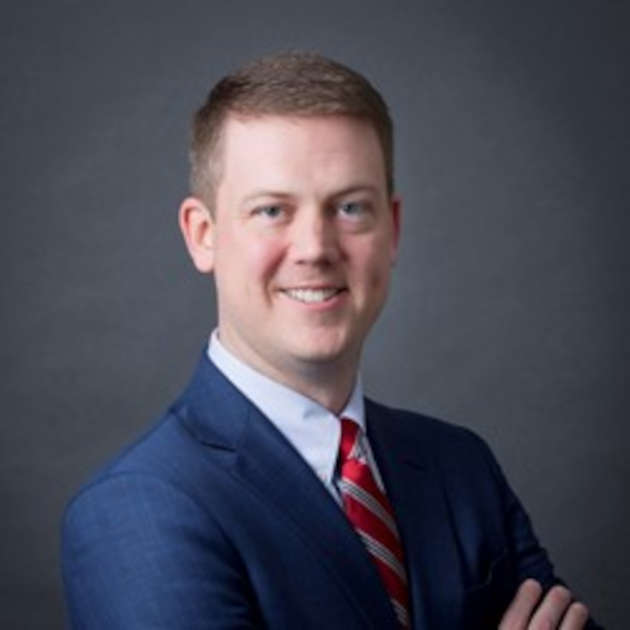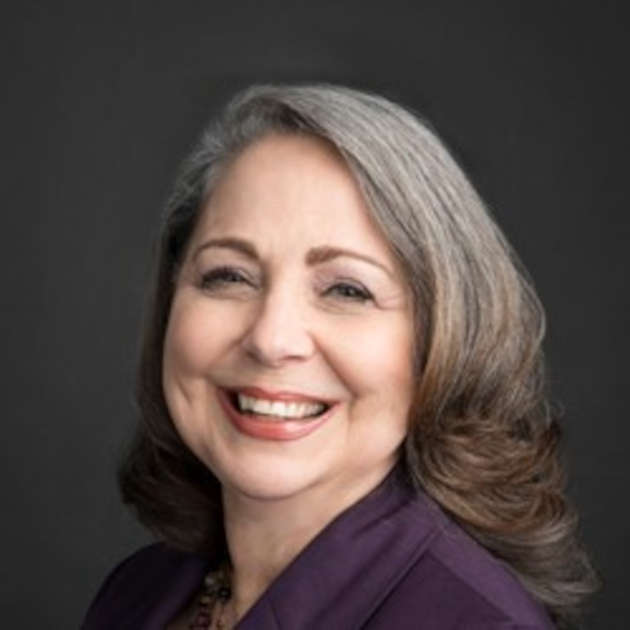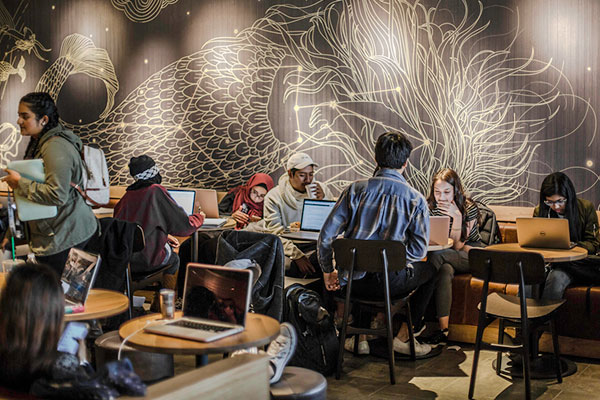Healthcare, under normal circumstances, is complicated for patients. But during the COVID-19 pandemic, healthcare is complicated for everyone — patients, providers, hospitals, insurers.
Healthcare providers have sharpened their tech skills to keep in touch with patients, and patients are learning it is OK to connect with doctors online and via phone.
Telehealth Use Is Up …

Heidi Rasmussen, a Naveen Jindal School of Management BS’91 alumna, started her company, freshbenies, in 2009, while the nation still was in the aftershocks of the Great Recession. The freshbenies services are an add-on to company healthcare benefits and offer employees ways to lower healthcare costs by using virtual medical services. Rasmussen said freshbenies recently has seen utilization rates soar across the industry.
Before COVID-19, well below 10% of Americans used their telehealth option — meaning that in a group of 100 people, there were fewer than 10 uses per year.
“At freshbenies, we’ve always strived for high usage, so we have a 51% utilization rate,” Rasmussen said, “and considering that same group of 100 people visit the doctor three to four times a year for various checkups and ailments, there’s still a lot of room for growth. With COVID-19, I think more Americans will enjoy having access to, and using, telehealth and behavioral telehealth.”
… And People Like It

Dr. James (Jim) Walton, a fellow of the American College of Physicians, is president and CEO of Genesis Physicians Group and an adjunct lecturer in the Jindal School’s Healthcare Leadership and Management programs. “A radical disruption in the delivery of primary and specialty physician-led healthcare has occurred,” said Walton, whose group is a large North Texas network of independent primary and specialty care physicians. “Over the course of two or three weeks, physician practices went from full schedules and crowded waiting rooms, with uncomfortably long delays in obtaining appointments, to almost no business.”
He said doctors and patients, once they master the relatively simple technology of connecting online, have found it works. And, maybe surprising physicians themselves, Walton said, telemedicine “is breaking through the resistance of physicians, and many found that they liked it. … Patients like it as well.”
Post-Quarantine, ‘Relevance Remaining’
“Getting employees to use telemedicine has been the challenge,” said Drew Brown, co-president and COO of TexCap Insurance, a Dallas-based independent insurance agency. “Once an employee uses the service and is able to get their condition handled, including getting a prescription if needed, employees are hooked.”

Rasmussen said services available to freshbenies members, and others with online telehealth benefits, are particularly valuable in this time of isolation, and she sees their relevance remaining well after the initial quarantine ends.
Services include:
- Telehealth: Members talk to a doctor by phone or video to get diagnosis, treatment options and prescription, if medically necessary.
- Behavioral telehealth: Members establish an ongoing relationship with a licensed therapist through video or phone sessions. Particularly now, this helps address anxiety, depression and other issues surfacing from enforced isolation, Rasmussen said.
- A 24/7 replacement for “Dr. Google”: Rather than looking up symptoms online and then trying to figure out what it all means, members can have an email conversation to get personalized advice on symptoms.
- For freshbenies members, a resource person to help locate doctors or facilities that are open and available, as well as COVID-19 testing sites. Service personnel also can answer questions related to financial assistance, including insurance and COBRA, for those who have been laid off or furloughed.
Many Appealing Points
The biggest hang-up in delivering telehealth, Walton said, is twofold – the intimidation factor and the confusion around the technology. He said he is seeing that physicians have adapted quickly, and while some patients are fine, others take longer to get “logged on.”
“I recently had my own telemedicine visit with an orthopedist. It did take 20 or 30 minutes of a staff person’s time to help me use the technology and to understand how the doctor was going to connect with me,” but otherwise it was a good experience, Walton said. “I see a time where patients will be waiting in the “virtual waiting room” for the physician to come on the line, but they will be at home.”
Telehealth has appeal to companies as well, Brown said: “From an employer’s standpoint, it will save them money on claims paid, as well as employees missing time from work to go to the doctor.”
For people in underserved communities — rural, low-income, or otherwise medically underserved — Walton sees value in telehealth. “It essentially eliminates time and distance as a barrier for patient engagement,” he said.
The Video Bonus — With Some Cautions
Using video to see in real time a patient’s expressions and body language is an added bonus.
“Diagnostic confirmation is often determined by a physical exam and the ‘laying on of hands,’ ” he said. “We were taught to trust both the history and the physical. … That said, many of the quality problems in American healthcare are related to more simple issues like preventive healthcare and maintenance of chronic illnesses through regular physician/healthcare provider checkups….and these can be accomplished through telehealth.”
Walton offered a caution however: While convenient and comforting now, he said telehealth will not replace the personal connection of an office visit. “But physicians now have another tool in their toolbox to connect to patients, creating greater service with the ability to address both acute and chronic needs.”
There are also the questions of patient satisfaction and cost, Brown said. “We find that if employees have to pay a copayment to use telemedicine and do not have the outcome they are looking for, they are less likely to use the service going forward.”
For Brown and other local insurance agents, the COVID-19 struggle is real for them, too. “Most of us are small businesses, just like our clients,” said Brown, who is president elect of the Independent Insurance Agents of Dallas, an industry trade group. “There is tremendous empathy for what our fellow neighbors are going through, as we are all working to minimize the impact of this pandemic on our families, employees and clients.”
Insurance in the Age of Pandemics
Drew Brown, co-president and COO of TexCap Insurance, a Dallas-based independent insurance agency, is president-elect of the Independent Insurance Agents of Dallas, which represents more than 2,000 agency, carrier and vendor members in the independent insurance channel in North Texas.

Rita Rolf, BS’89, is senior client manager at TexCap. The UT Dallas alumna earned her business administration degree at the Jindal School and is president-elect of the Dallas Association of Health Underwriters.
IIAD has established several scholarships for Naveen Jindal School of Management risk management and insurance students.
Brown and Rolf answer some questions about insurance now and in the future.
Are more employees getting access to health insurance now?
Since COVID-19 has become a national health emergency, insurance carriers have relaxed the minimum number of hours worked to be eligible for group insurance plans. This has helped employers that can afford to continue coverage keep benefits in place as long as the premium is paid. Paycheck Protection Program loans under the Coronavirus Aid, Relief and Economic Security Act (CARES) have helped employers keep employees on payroll and continuing benefit coverage. Employees who lose coverage in the group market have the option to continue coverage at their own costs through the Consolidated Omnibus Budget Reconciliation Act (COBRA) or Texas State Continuation.
If individuals lose coverage, they have a special enrollment event that allows them to obtain coverage in the Affordable Care Act marketplace. Even though the federal government has decided not to allow open enrollment in the individual health market, they have agreed to pay the costs for COVID-19 testing and treatment for the uninsured.
How does “pandemic” fit into the new paradigm for healthcare insurance?
The fully insured healthcare plans have relaxed a lot since this pandemic started. Under Section 125 of IRS code, employees can only change beneficiaries on their policies during annual open enrollment or in the case of a family status change. With this pandemic, group carriers have offered a one-time special enrollment where employees or dependents can join the group plan outside the annual open-enrollment period.
The health insurance carriers are paying for the testing and the actual treatment for COVID-19 with no copayments or out of pocket. They were quick to offer the testing under preventive care services at no cost and then came around to paying the cost of care with no out of pocket from the patient.
Will a COVID-19 diagnosis become a “pre-existing condition”?
No, with the passage of the Affordable Care Act in 2010, ACA-qualified plans cannot exclude pre-existing conditions. There is some concern in the media and among Affordable Care Act supporters that if the Texas vs. Azar case is decided by the U.S. Supreme Court and ACA is ruled to be unconstitutional and void, Americans would lose these pre-existing protections.
Since this is the most popular provision of ACA, the industry and politicians would have a hard time passing any legislation that would remove this provision.
Does “pandemic” now join the list of issues, like flood, terrorist attacks, and others, that you would conceivably cover businesses for in the future?
Based on what we see currently being discussed at the federal level, there are two viable options being floated:
- One option would be similar to the National Flood Insurance Program’s Write-Your-Own Program. This would involve the carriers, but really only as a means of distribution to the insured. Carriers would offer identical policies on their own “paper,” but the government would re-insure those carriers for 100% of the losses. We at TexCap believe this is more likely to gain traction, as it does not saddle the responsibility for losses on the backs of carriers.
- The second option would create a Pandemic Risk and Insurance Act. This idea would be similar to the Terrorism Risk Insurance Act (TRIA), which was created to cover insured losses related to terrorism after 9/11. Essentially, carriers would be on the hook for the first layer (estimated around 20%) of losses due to a pandemic. Then the government would re-insure above that “per carrier deductible.” This proposal is not getting much traction with carriers or our national association.
It comes down to frequency vs severity. With terrorism or flood, it is understood there will be some unknown frequency, but with some confined and measurable level of severity. That is something that carriers can plan for. With pandemics, it is generally understood that frequency may be low, but as we are seeing, severity is very difficult to measure. It is hard for carriers to be on board with proposals where they have no idea what their worst-case scenario may be.






